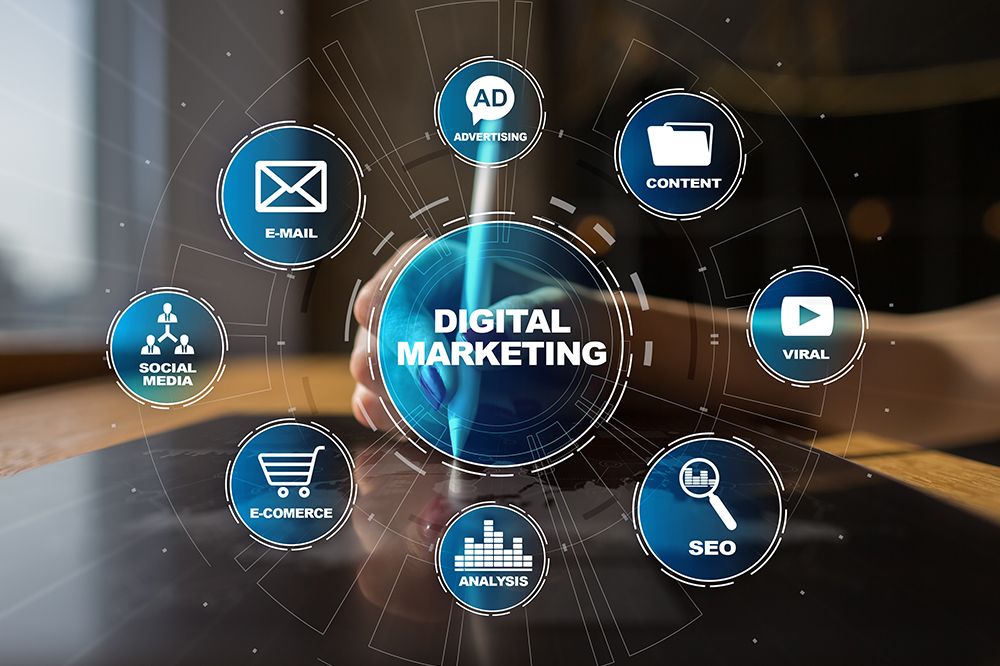Step-by-Step Digital Marketing Plan to Boost Website Traffic
In today’s competitive online space, having a website is not enough — you need consistent and high-quality traffic to achieve growth. Digital marketing offers targeted strategies that can help attract the right audience, improve engagement, and boost conversions. This guide outlines practical and effective methods to increase website traffic through digital marketing.

Understanding Website Traffic in a Digital Marketing Context
Website traffic refers to the number of visitors who land on your website over a specific period. In digital marketing, the focus is not just on increasing the number of visitors but attracting those who are genuinely interested in your products, services, or content.
There are two main types of traffic:
- Organic Traffic: Visitors who arrive through unpaid search engine results.
- Paid Traffic: Visitors generated through advertising campaigns.
Both are valuable, but a balanced approach that combines organic and paid strategies delivers the best long-term results.
Key Digital Marketing Strategies to Increase Website Traffic
1. Optimize Your Website for Search Engines (SEO)
Search Engine Optimization (SEO) improves your website’s visibility on search results. Higher rankings lead to more clicks and visits.
Essential SEO Practices:
- Use targeted keywords in titles, headings, and content.
- Create high-quality, original, and relevant content.
- Ensure your website loads quickly.
- Optimize images with descriptive alt tags.
- Build backlinks from reputable websites.
2. Create High-Value Content
Content is the foundation of digital marketing. Well-structured, informative, and engaging content keeps visitors on your site longer and encourages them to return.
Effective Content Types:
- Blog articles
- How-to guides
- Case studies
- Infographics
- Industry news and updates
Publishing consistently helps establish authority in your niche and improves search visibility.
3. Leverage Social Media Marketing
Social media platforms are powerful tools for driving traffic. They allow you to share content, interact with your audience, and expand your reach.
Best Practices for Social Media:
- Post regularly on platforms where your audience is active.
- Use engaging visuals, videos, and interactive content.
- Join relevant groups or communities.
- Run targeted ad campaigns for increased visibility.
4. Use Email Marketing Campaigns
Email marketing keeps your audience informed and engaged. Sending valuable updates, offers, and newsletters can direct subscribers back to your website.
Email Marketing Tips:
- Segment your audience based on preferences.
- Write clear subject lines that encourage clicks.
- Include strong calls-to-action.
- Track open and click-through rates to improve results.
5. Invest in Pay-Per-Click (PPC) Advertising
PPC campaigns help you appear in front of your target audience instantly. Platforms like search engines and social media offer advanced targeting options to reach the right users.
Benefits of PPC:
- Immediate traffic boost
- Highly targeted reach
- Measurable results
- Flexibility to adjust campaigns in real-time
6. Collaborate with Influencers
Partnering with influencers in your industry can expand your reach and introduce your website to a new audience.
Influencer Collaboration Ideas:
- Sponsored posts
- Product reviews
- Social media takeovers
- Guest content creation
7. Improve User Experience (UX)
A website that is easy to navigate, visually appealing, and mobile-friendly encourages visitors to stay longer and explore more pages.
UX Enhancements:
- Simplify navigation menus
- Use clear headings and subheadings
- Maintain consistent design and branding
- Optimize for mobile devices
Comparison of Digital Marketing Strategies
| Strategy | Cost Level | Time to See Results | Traffic Sustainability |
| SEO | Low | 3–6 months | High |
| Content Marketing | Low | 3–6 months | High |
| Social Media Marketing | Medium | 1–3 months | Medium to High |
| Email Marketing | Low | Immediate | Medium |
| PPC Advertising | High | Immediate | Low to Medium |
| Influencer Marketing | Medium | 1–2 months | Medium |
Measuring and Monitoring Website Traffic Growth
Tracking your results is essential to ensure your strategies are working. Monitor:
- Traffic sources: Organic, direct, social, referral
- Bounce rate: Percentage of visitors leaving after viewing one page
- Average session duration: How long visitors stay on your site
- Conversion rate: Percentage of visitors taking desired actions
Regular analysis allows you to refine strategies and focus on what works best.
Building a Long-Term Traffic Growth Plan
While paid campaigns deliver quick results, sustainable growth comes from combining multiple digital marketing approaches. Focus on:
- Consistent content creation
- Strong SEO foundations
- Active audience engagement
- Regular performance reviews
Digital marketing is an ongoing process, and patience combined with strategic action will lead to steady and reliable traffic growth.
FAQs
1. How long does it take to see results from digital marketing for website traffic?
The timeline varies by strategy. SEO and content marketing may take 3–6 months, while PPC and email marketing can deliver results almost immediately.
2. Which is better for traffic growth — organic or paid marketing?
Both are important. Organic marketing builds long-term, sustainable traffic, while paid marketing offers quick, targeted results. A combination works best.
3. How can I track whether my digital marketing is increasing traffic?
Use analytics tools to monitor metrics like total visits, traffic sources, bounce rates, and conversion rates. Reviewing these regularly will help measure progress.











